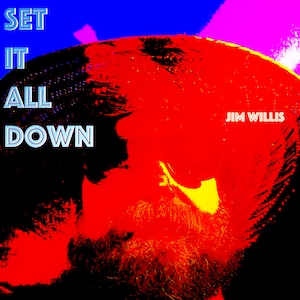In the preface to his book of essays, “Mouth Wide Open”, food writer John Thorne writes that our widespread adoption of cooking-as-entertainment is bringing about the death of cooking itself. I just happened to read this as I was putting together our Thanksgiving menu and realized that much like the “Keep Christ in Christmas” message, we probably ought to have something like “Keep the Cooking in Thanksgiving.”
Thorne says before the radio, people learned to sing and play instruments if they wanted to hear music. “Entertainments like Iron Chef and the Food Network are similarly transforming kitchen work into spectacle.” In other words, instead of learning to play instruments and sing, we fire up a track iTunes and instead of learning to cook “we’ll pop a favorite chef’s signature dish into the microwave,” writes Thorne.
“Cooking is a metier that demands that you learn to think with your senses and articulate with your hands. Tasting, smelling, prodding, kneading, even listening — at bottom, kitchen work is just not a verbal activity.” He’s referring here to how difficult it is to learn to cook from a book. Learning to cook requires direct hands on experience, getting down, “mano a mano with the onions and potatoes.”
In this way, cooking —real cooking — is like meditation. You can read about meditation all day long and it won’t have nearly the effect of actually sitting and watching your thoughts and you breath for five minutes. Naturally there is an entire industry dedicated to emptying your pockets in exchange for books and such about meditation because at the end of the day it’s easier to read about meditation than it is to actually meditate.
And so it goes with cooking. Thorne writes that after a hundred years of massive commercial effort being invested to create more things for you to buy to make cooking easier, even the word “cooking” has been twisted. “As the prepared-meal counter at markets like Whole Foods gets longer and longer, ‘cooking’ becomes a matter of selecting something among all this food to bring home for dinner.”
When writing food stories, I greatly prefer writing about home cooks over professional chefs. Most of the professional chefs I’ve interviewed are very, very self-aware—too self-aware to lose themselves in the interview. But I’ve found that the best home cooks are not worried about their image as “chefs” or worried about entertaining.
Just as the best musicians disappear in service to the music they are creating, the best home cooks disappear in the kitchen and mostly are preoccupied with being true to what they are making. Whatever other chaos or madness may permeate their day-to-day life, when they are in the kitchen explaining how to make something dear and personal to them, these home cooks become like Zen masters, vessels for the direct transmission of enlightenment.
Thorne says that as cooking becomes entertainment it becomes easier to let other people do it for you. Of course where the pace of modern life intersects with the convenience of modern, prepared food options, every family has to weigh their priorities.
If getting down “mano a mano with the onions and potatoes” is not as important as soccer practice or whatever other commitments are on the calendar, prepared foods are going to win out.
And so, as I was reading this on week leading up to Thanksgiving, I’m thinking that there’s no soccer practice on Thanksgiving, right? This is our country’s only holiday that is based on sharing food together (there probably ought to be more of those) and many of us will be lucky to be at home with our families.
In reading Thorne’s essay at this right time of year, it occurs to me that this holiday is the perfect opportunity to be mindful in the kitchen. No matter what we do in the kitchen the rest of the year, the very essence of Thanksgiving is to be mindful and grateful, especially if we have families to share that gratitude with. I can think of no finer way to do that then to be rubbing elbows at the counter while we get “mano a mano with the onions and potatoes.”





